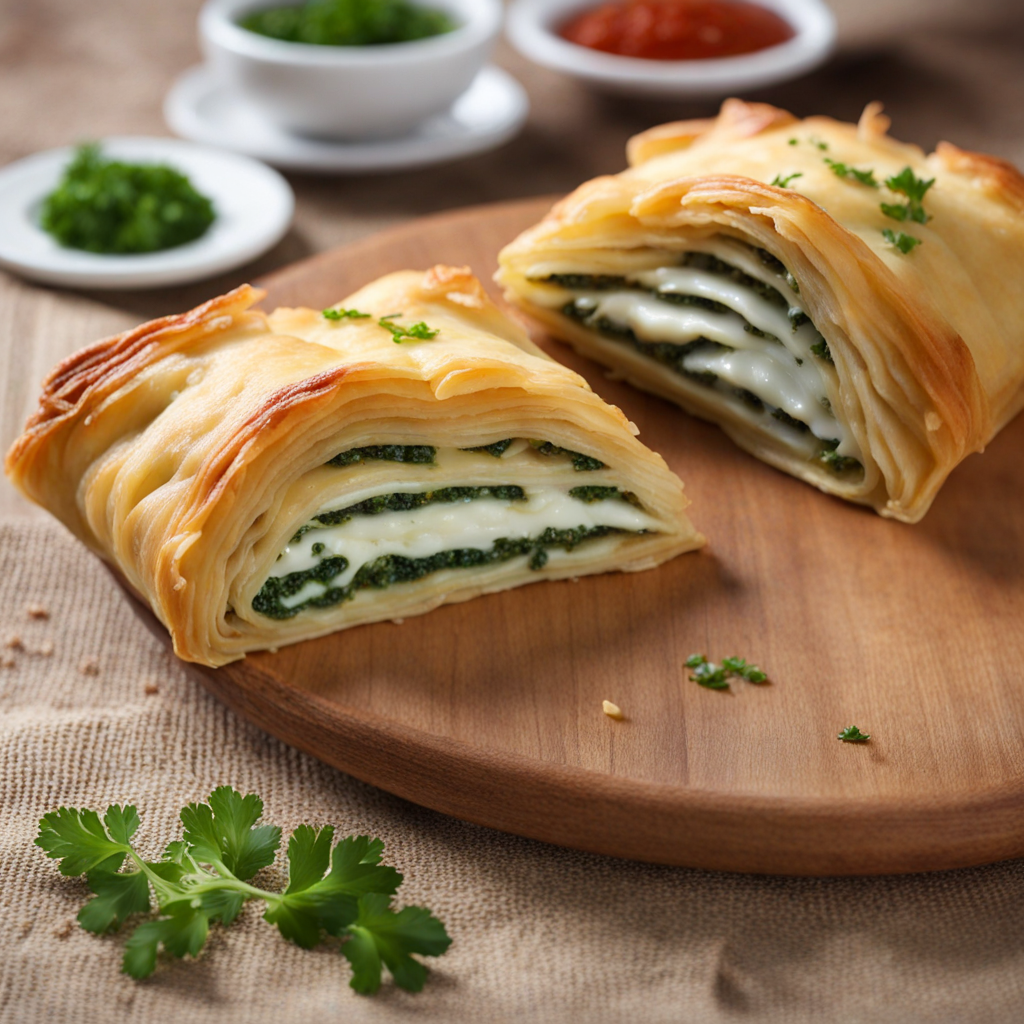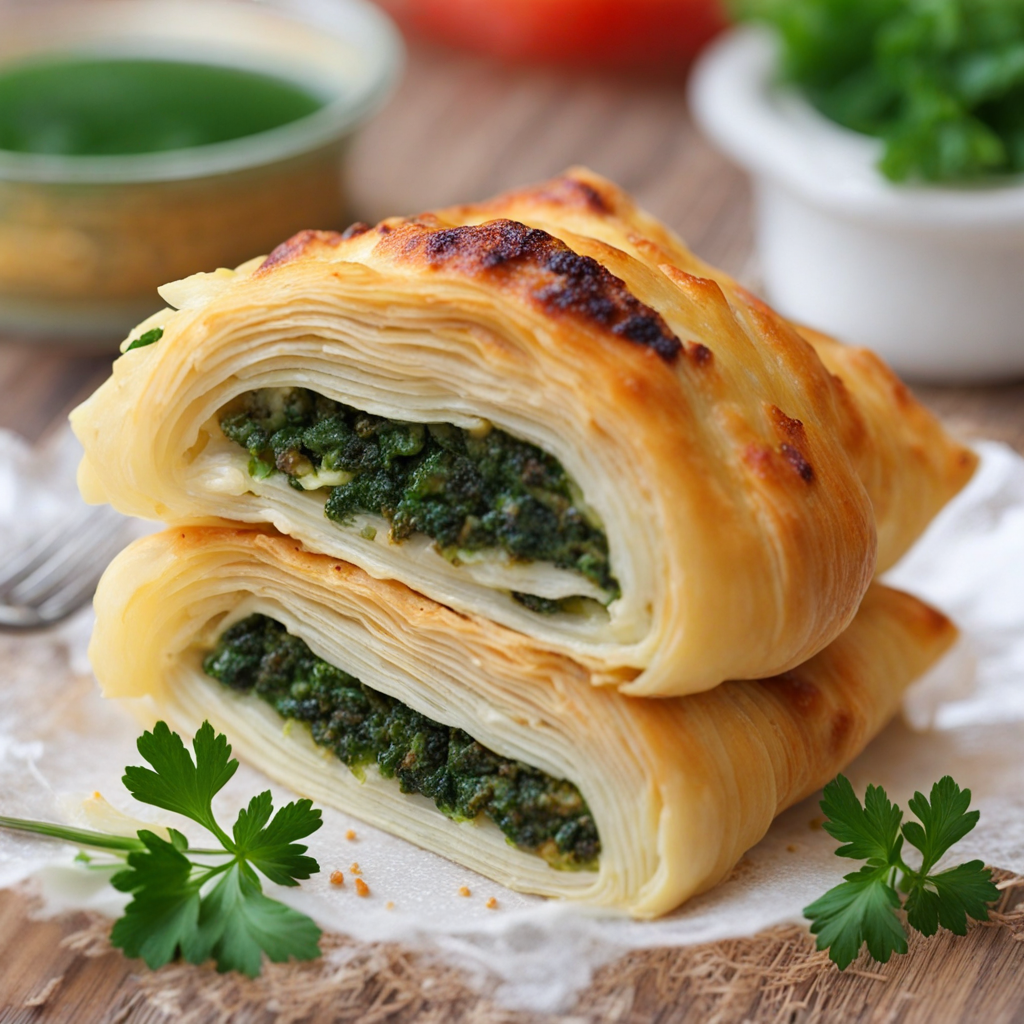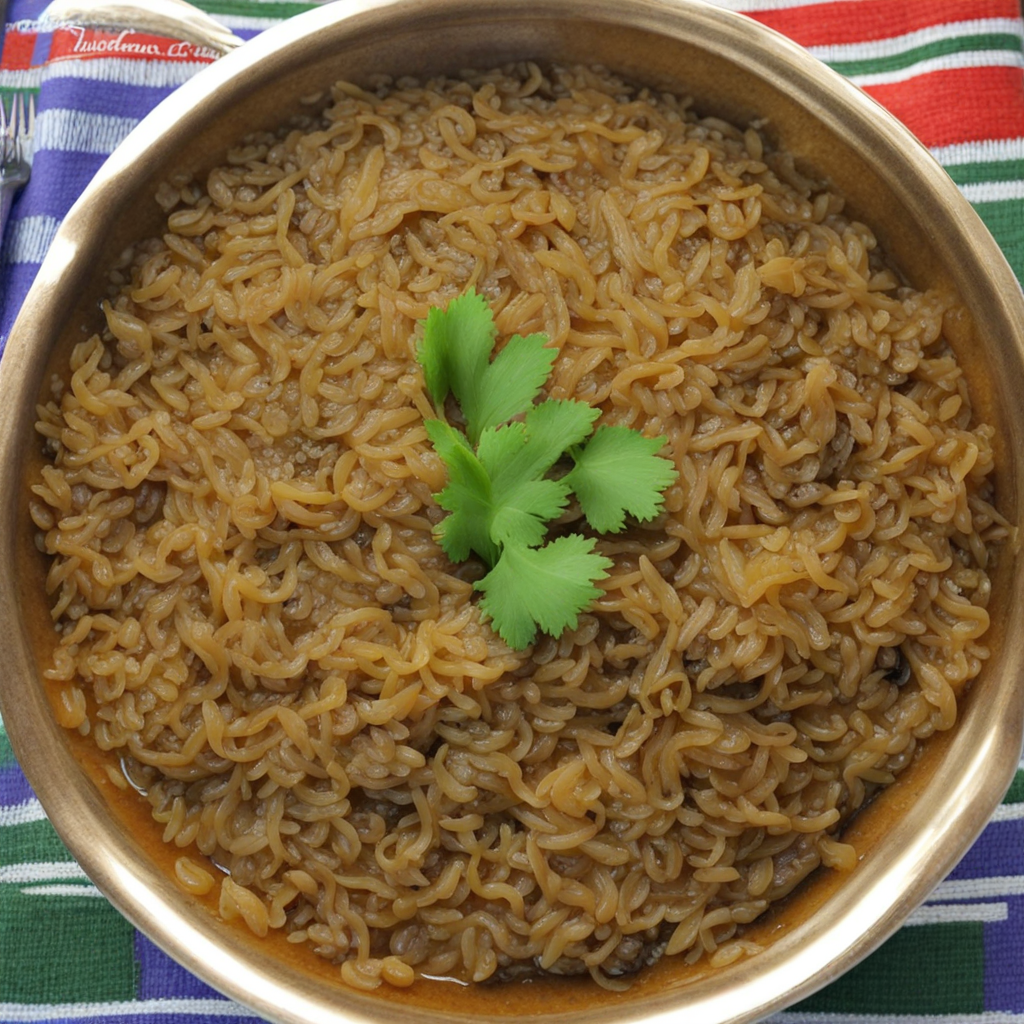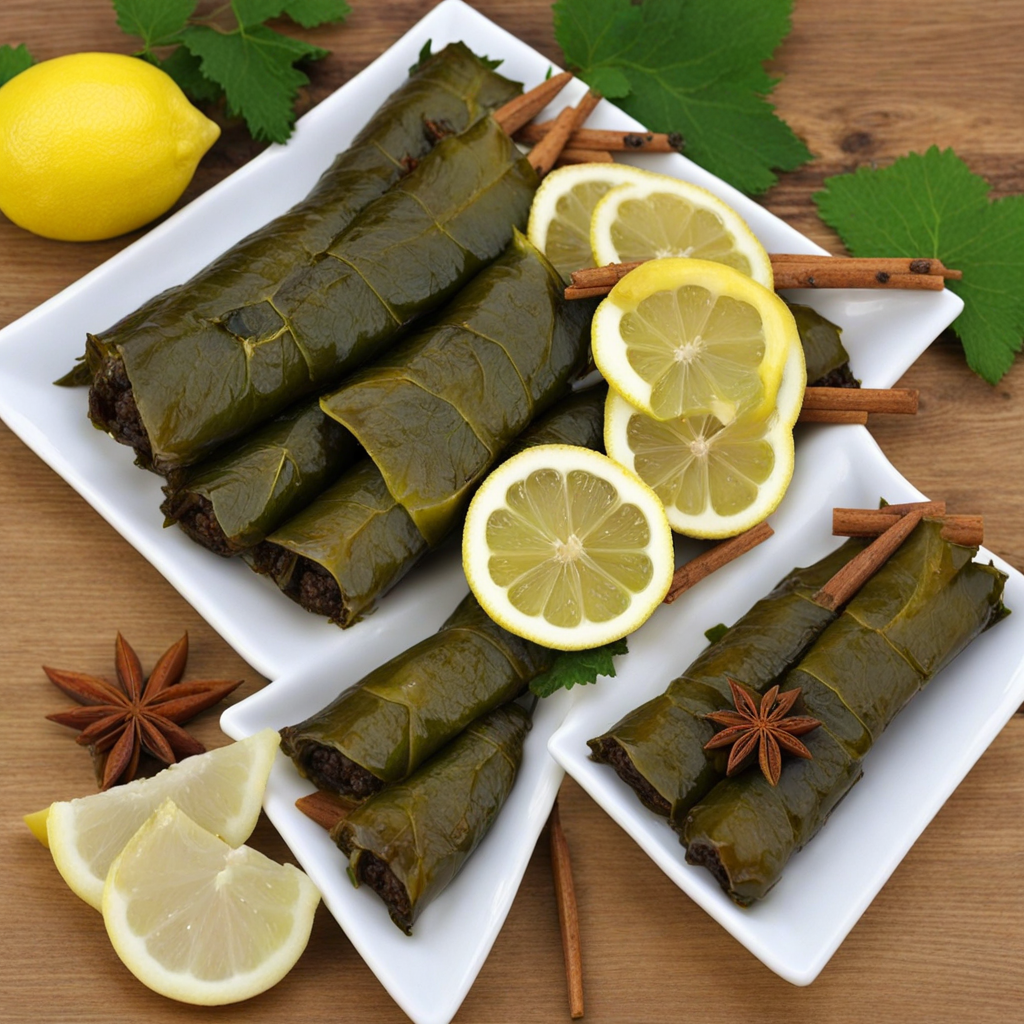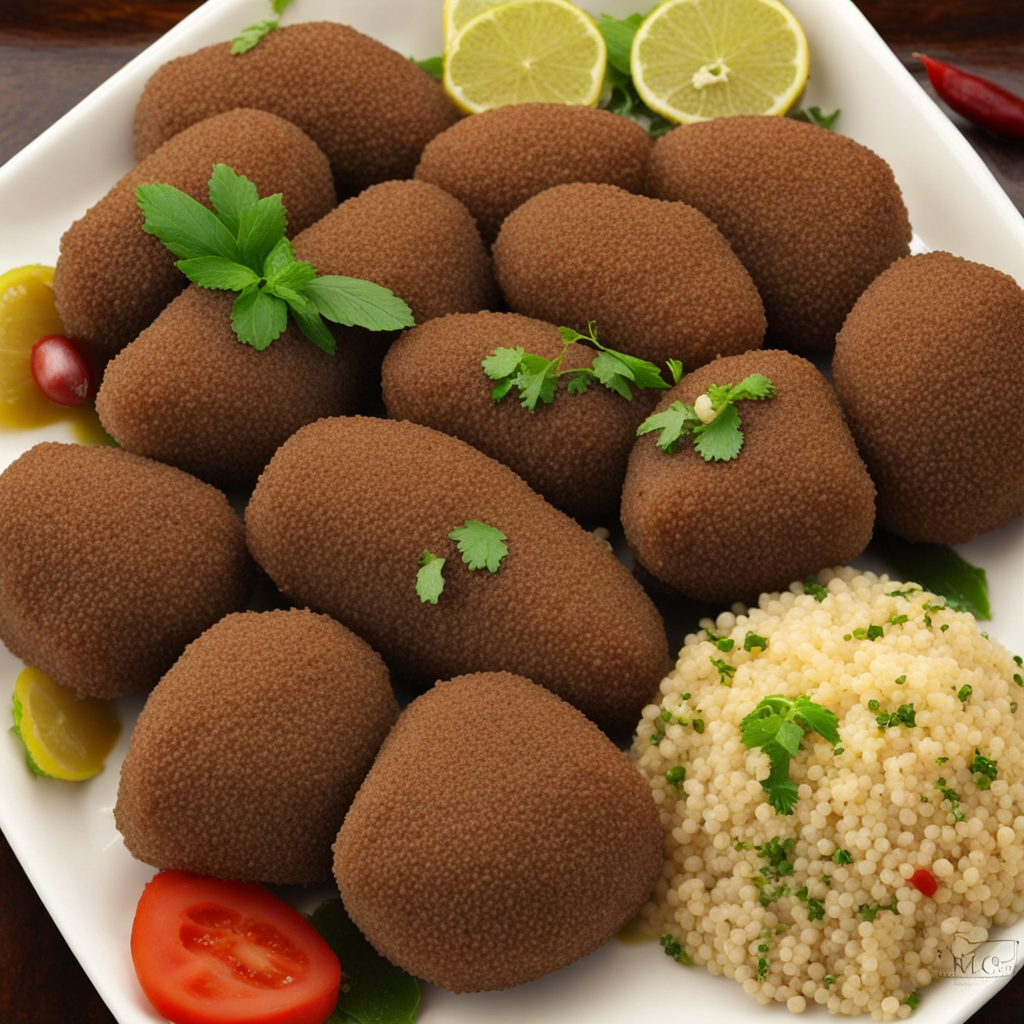Su Böreği
Su Böreği, a delightful dish originating from Syria, is a savory pastry that embodies the rich flavors and culinary traditions of the region. This exquisite delicacy is crafted from layers of thin, doughy sheets known as yufka, which are similar to phyllo pastry. The dough is meticulously rolled out and layered with a mixture of fresh ingredients, often featuring a generous filling of crumbled feta cheese, spinach, and aromatic herbs. The combination of textures and flavors creates a harmonious balance that is both comforting and satisfying, making it a beloved dish among locals and visitors alike. What sets Su Böreği apart is its unique cooking method. The layered pastry is typically boiled briefly before baking, a technique that gives it a distinctive soft yet slightly chewy texture. This preparation allows the flavors to meld beautifully, resulting in a pastry that is crispy on the outside while remaining tender and moist on the inside. The golden-brown crust, achieved through baking, adds an inviting crunch that contrasts beautifully with the creamy filling. Each bite is a delightful experience, revealing the depth of flavor from the spices and herbs used in the filling. Often served in generous slices, Su Böreği can be enjoyed as a hearty snack or a main course, making it versatile for any meal of the day. It pairs wonderfully with a side of yogurt or a fresh salad, enhancing its flavors and adding a refreshing element to the dish. As you savor this traditional Syrian pastry, you will be transported into a world of taste that celebrates the art of cooking, showcasing the love and care that goes into each layer of this delicious creation.
How It Became This Dish
The History of 'سو بوريك' (Soubourik) from Syria Syria, a land steeped in history and tradition, boasts a rich culinary heritage that reflects its diverse cultural tapestry. Among the many delightful dishes that grace Syrian tables, 'سو بوريك' (Soubourik) stands out as a beloved staple. This savory pastry, filled with a variety of ingredients, encapsulates the essence of Syrian cuisine, blending flavors, techniques, and the stories of generations past. Origins of Soubourik The origins of Soubourik can be traced back to the ancient civilizations that thrived in the region. The Levant, where Syria is located, has long been a crossroads for trade, migration, and cultural exchange. As a result, culinary practices from various cultures have influenced one another over the centuries. The name 'Soubourik' is derived from the Turkish word 'börek,' which itself has roots in the Persian 'būrek.' This indicates a shared culinary heritage that extends beyond borders, emphasizing the fluidity of food traditions. Historically, the use of pastry to encase fillings can be traced back to the Byzantine Empire. The Greeks and Romans were known to have made similar dishes, which were later adapted and enriched by the Arab culinary tradition after the Islamic conquests. The introduction of new spices and ingredients during the Islamic Golden Age further transformed these early pastries, giving rise to a variety of stuffed breads and pastries that are still enjoyed today. Cultural Significance Soubourik holds a special place in Syrian culture, often being associated with communal gatherings, celebrations, and family meals. This dish is not only a culinary delight but also a symbol of hospitality. In Syrian culture, the presentation of food is a way to express generosity and warmth, and Soubourik is frequently served to guests as a gesture of welcome. The act of preparing Soubourik can also be a communal activity, bringing families together in the kitchen, where generations share recipes, techniques, and stories. Moreover, Soubourik is versatile in its fillings, which can vary widely depending on regional preferences and seasonal ingredients. Common fillings include minced meat (beef or lamb), cheese, spinach, or a mixture of vegetables. This adaptability not only reflects the agricultural bounty of the region but also the creativity of Syrian cooks, who make the most of what is available to them. Development Over Time As Syria underwent various political, social, and economic changes throughout history, so too did its culinary practices. The Ottoman Empire, which ruled much of the region for several centuries, played a crucial role in shaping the development of Soubourik. The incorporation of new spices, such as sumac and za'atar, and techniques from across the empire enriched the flavors of this beloved pastry. During the 19th and early 20th centuries, with the rise of nationalism and the quest for cultural identity, there was a renewed interest in traditional foods, including Soubourik. It became a symbol of national pride, and recipes were passed down through families, often with unique regional variations that reflect local tastes and ingredients. The Syrian diaspora, especially following the civil unrest that began in 2011, has also contributed to the evolution of Soubourik. As Syrians sought refuge in various parts of the world, they brought their culinary traditions with them. In many cities across Europe, the Americas, and beyond, Soubourik has found a new audience and has been adapted to cater to local tastes and available ingredients. This has led to the emergence of fusion variations, blending traditional Syrian fillings with international influences, thus keeping the dish alive and relevant. Modern Interpretations and Global Reach Today, Soubourik can be found in many Middle Eastern restaurants around the world, and its appeal continues to grow. With the rise of global interest in Middle Eastern cuisine, chefs and home cooks alike have embraced this delectable pastry, experimenting with innovative fillings and presentation styles. From traditional meat and cheese versions to modern takes incorporating ingredients like mushrooms or quinoa, Soubourik has become a canvas for culinary creativity. Moreover, social media platforms have played a significant role in popularizing Soubourik and other Syrian dishes. Food bloggers and influencers showcase their recipes, share cooking tips, and highlight the cultural significance of these dishes, fostering a greater appreciation for Syrian cuisine among a global audience. Conclusion In conclusion, Soubourik is more than just a delicious pastry; it is a reflection of Syria’s rich culinary heritage and the resilience of its people. From its ancient roots to its modern adaptations, this dish encapsulates the spirit of community, creativity, and cultural exchange. Whether enjoyed at a family gathering in a Syrian home or at a restaurant in a bustling city abroad, Soubourik continues to bridge the past and present, reminding us of the stories and traditions that shape our culinary landscape. As it evolves, Soubourik remains a testament to the enduring power of food to connect us across cultures and generations.
You may like
Discover local flavors from Syria


